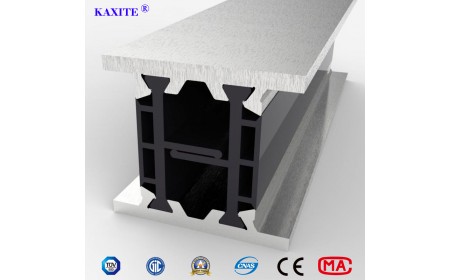Advantages of reinforcing aluminium window frames with polyamide bars
Today, the importance of building physics for controlling energy efficiency works in many structures, including using high-end aluminium windows.
The structural benefit of aluminium windows has long been noted by architects and designers. Indeed, thousands of windows in historic buildings, like the Empire State Building, have been replaced with aluminium frames because of their immense structural integrity and overall look.
The structural support offered by modern aluminium alloys can easily support the weight of heavy glass panes, “thus maximising a building’s capability for using natural sunlight.” Therefore, the question of how an energy-efficient aluminium window frame will contribute to the building physics of a structure arises – not just because of the light it allows in, but also because of the heat it retains. Thanks to the addition of polyamide insulating bars in modern aluminium frames, both attributes are available to designers without the need to compromise between them.
when a thermally insulated aluminium window frame is reinforced with polyamide bars, these components are actually inserted between the interior and exterior profiles of the product, so they need not interfere with the visual appearance of the frames. They can be seamlessly fitted to aluminium window frames as well as high-end aluminium doors and high-end aluminium façades during the manufacturing process. When specified to assist with the building physics of a structure's windows, polyamide insulating bars prevent the transfer of heat from either the inside to the outside or vice versa. Importantly, no structural support is lost by their inclusion in aluminium frames making them an ideal solution for the improvement of thermal values within a structure.
Improving U(f) values with polyamide bars
When used with thermally efficient glazing, polyamide bars in the frames of aluminium window
s will provide better Uf values. Where the commonly expressed U-value of a window relates to the thermal insulation rating of its glazing, usually given in Watts per m2K, the Uf rating also includes the rating of the frame. For building designers who are seeking an overall building physics that is as thermally insulated as possible, then measuring the windows by their U(f) rating - not just the glazing element - makes a great deal of sense. However, that is not all. The addition polyamide insertions also reduce noise from being transmitted into a building from the exterior, thanks to the break they create inside.
“A high-performance window must have low heat loss and air leakage, but high solar transmission.”
Anne-Grete Hestnes et al in their book Solar Energy Houses: Strategies, Technologies, Examples
The low profiles of aluminium frames are often excellent at allowing light to flood in as well as preventing unwanted airflow, but without polyamide bars are not so strong with thermal retention. Compared to some other frame materials commonly used, such as timber, aluminium alone can produce inferior results with thermal transmittance. It is only the addition of a thermal break consisting of a material of low thermal conductivity that will guarantee performance to be strong.
(It is resourced by https://thermevo.de/blog/polyamide-insulation-strips-78/blog_post/energy-efficient-aluminium-windows-structural-support-or-building-physics-91#blog_content)

